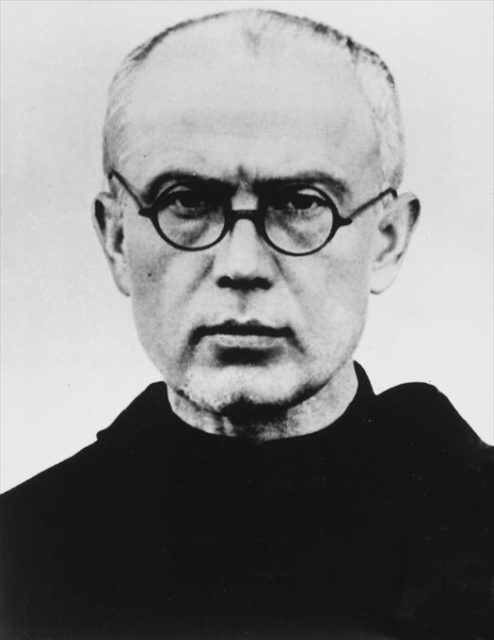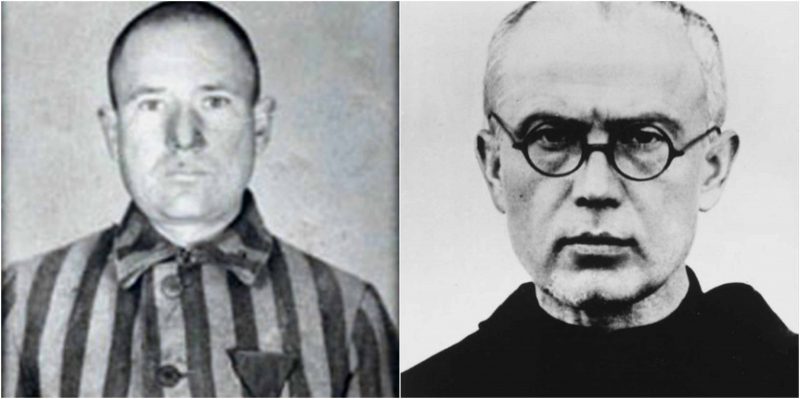When the Germans invaded Poland and started World War II, Saint Maximilian Kolbe was one of the few men to stay at his monastery; here he would care for others in a temporary hospital.
Once the town was captured by the Germans, he was arrested on September 19, but released on December 8.
The Germans tried to get him to sign the Deutsche Volksliste, which in turn would grant him the same rights as German civilians as long as he recognized his German ancestry. Once he was released, he returned to his monastery, where he and his fellow monks would provide shelter to the refugees from Greater Poland, which included 2,000 Jews who he hid from their German captures.

Kolbe even got permission to continue printing religious works, though it was reduced from what he had printed before. Though religious works were not all he published, the monastery became a publishing house of anti-Nazi propaganda. On the 17th of February 1941, the monastery was seized and shut down by the German authorities, Kolbe and four other men were arrested by the Gestapo before being taken to the Pawiak Prison.
On the 28th of May, he was transported to Auschwitz and designated prisoner #16670. Even through all this, he continued his work as a priest in Auschwitz, which drew a lot of hate and harassment; he was beaten by the guards so badly that a group of friendly inmates had to smuggle him to the prison hospital.
Kolbe was sent to the work camp, where his duties included carrying heavy blocks that would be used to build the crematorium. Overseeing the workers was a vicious man named “Bloody Krott” who singled out Kolbe, he treated him the worst of all.
The other workers said that Kolbe would take his beatings calmly.
On one noted occasion, Krott made Kolbe carry the heaviest load until he collapsed, when he did, Krott beat him within an inch of his life, leaving him to die in the mud. Near the end of July 1941, three unknown prisoners escaped Auschwitz which made SS-Hauptsturmfuher Karl Fritzsch furious.He decided he would have ten prisoners starve to death as punishment and a warning to the rest.

A man named Franciszek Gajowniczek was picked, he then began to cry out about his wife and children, prompting Kolbe to volunteer in his place.
A witness in his prison cell saw Kolbe leading the prisoners in prayer. Each time a guard came to check, he saw Kolbe standing or kneeling in the middle of the cell, looking calmly at anyone that entered. After two weeks of this, only Kolbe remained. The guards, however, wanted the cell empty, so they gave Kolbe a lethal injection of Carbolic acid.
It is said that Kolbe simply raised his arm and waited for the injection. His remains were cremated the 15th of August, the feast day of the Assumption of Mary.
Kolbe was later considered a martyr by the church and declared a saint.
